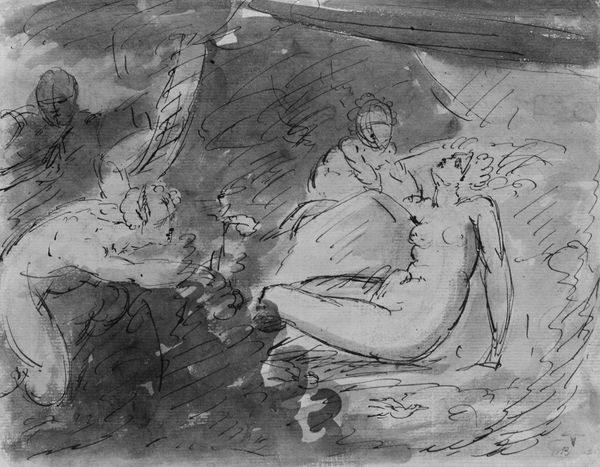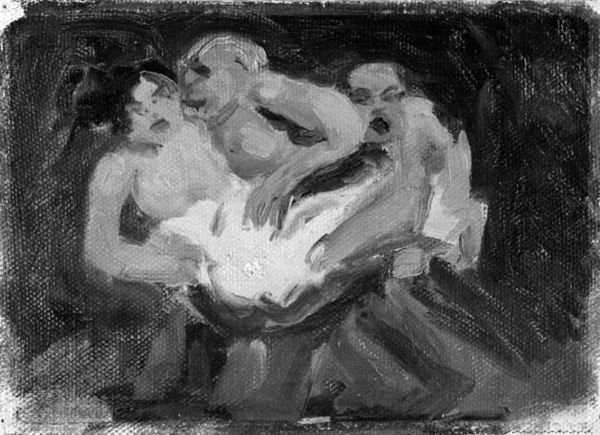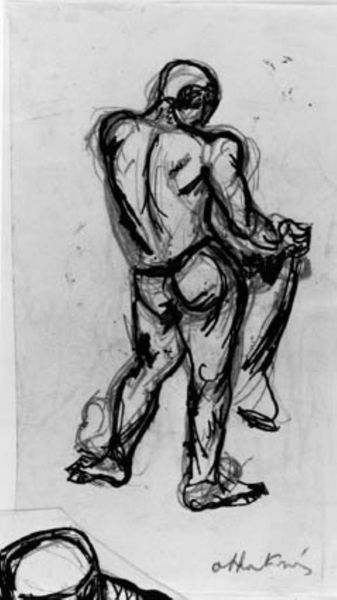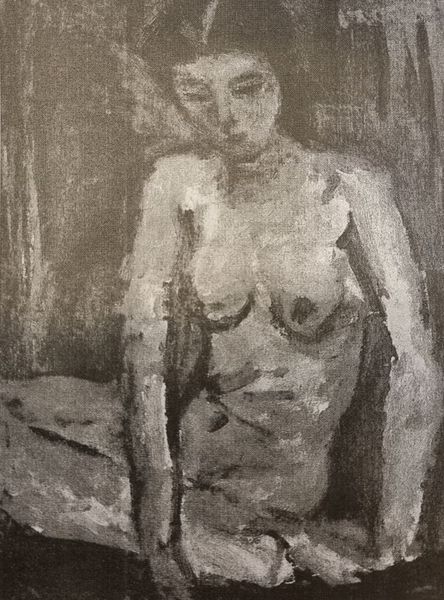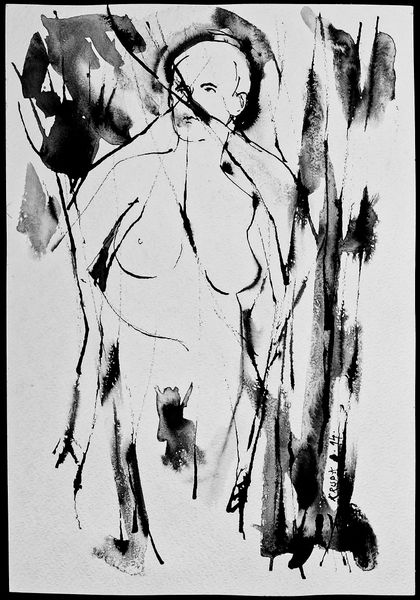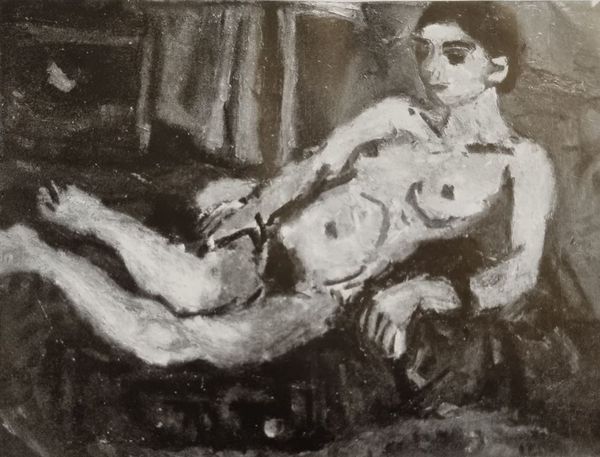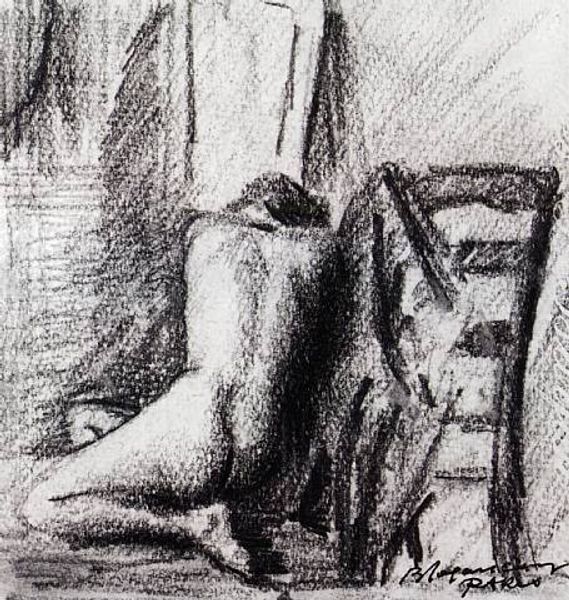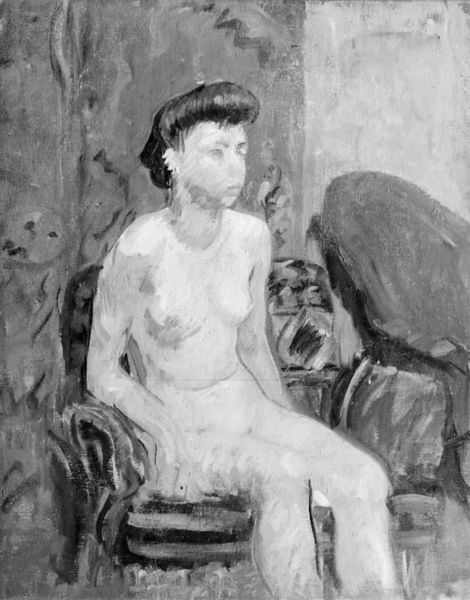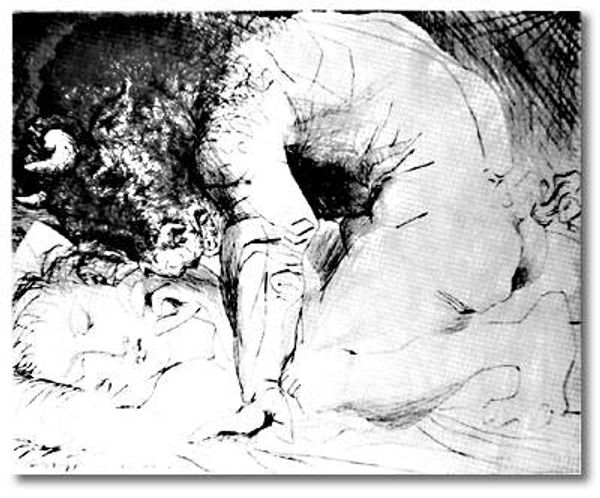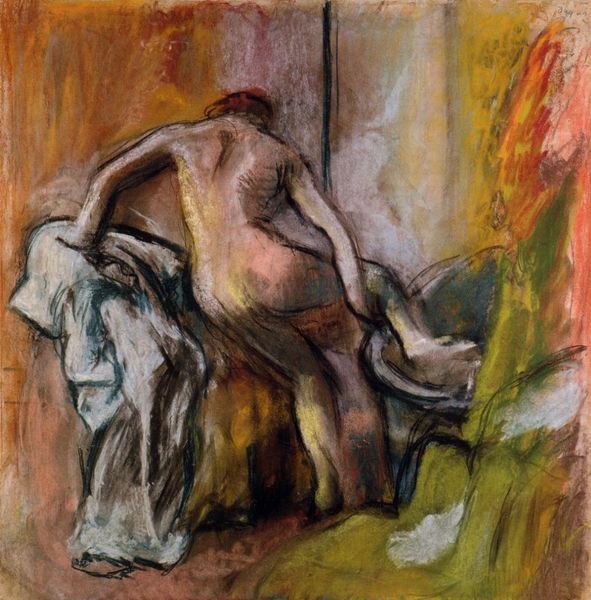
painting, oil-paint, paper, impasto
#
portrait
#
painting
#
oil-paint
#
charcoal drawing
#
figuration
#
paper
#
impasto
#
expressionism
#
surrealism
#
charcoal
#
nude
#
monochrome
Dimensions: 55 cm (height) x 45.5 cm (width) (Netto)
Curator: This painting, simply titled "Susanna", was created by Gösta Sandels between 1913 and 1917, and it's now held at the SMK, the Statens Museum for Kunst. It's executed in oil paint on paper. What strikes you first about it? Editor: Immediately, I notice the starkness of the monochrome palette—it creates a somber, almost ghostly atmosphere around the figure. There’s a sense of vulnerability accentuated by the use of dark and light contrasts. Curator: Indeed, the use of black and white impasto dramatically impacts the textural quality. Given the historical context, we should consider the availability of materials; what readily accessible pigments would Sandels have been using and how did that influence the expressionistic brushwork to highlight a sense of distress, possibly even alienation through the raw application? Editor: The name "Susanna" is interesting, invoking, whether intentionally or not, the biblical tale of Susanna and the Elders. This immediately places the viewer in a position of potential voyeurism or even judgment. Curator: I'm curious, what implications does the choice to revisit a classic trope hold? Is it just referencing a historical artistic tradition, or does Sandels deliberately evoke historical themes of innocence, desire, and perhaps even manipulation to add another layer to the painting's production of meaning? Editor: I believe it's more than just a simple reference. Sandels may be deliberately playing with these concepts, exploring not just the surface story but also the deeper cultural anxieties that the Susanna narrative embodies around women. Her downturned gaze could represent resignation, defiance, shame – the painting refuses to offer easy answers. Curator: This piece's emotional resonance also emerges through the vigorous impasto application. Sandels uses this particular technique to explore an interplay between conventional painting traditions and experimental practices. What do you think that signifies in terms of consumer value, access, or just overall interest? Editor: This piece creates tension, which leaves one questioning everything. Curator: Yes, a lingering disquiet—quite fitting for an artwork that challenges established norms of representation and interpretation. Editor: Ultimately, its starkness and symbolist gestures highlight more complex emotional, historical, and intellectual ideas, demanding a slow, contemplative viewing.
Comments
No comments
Be the first to comment and join the conversation on the ultimate creative platform.
